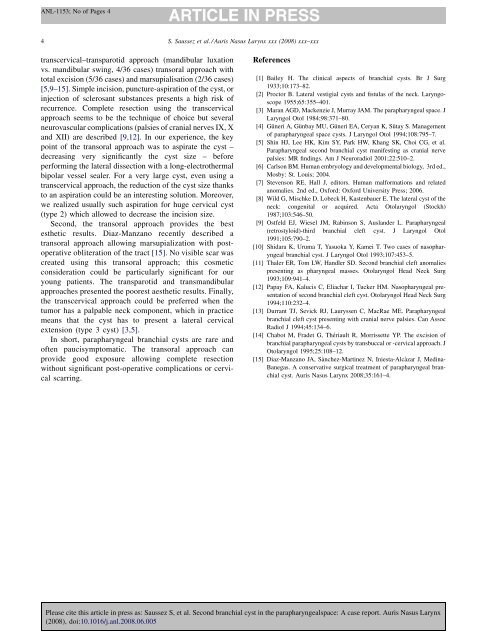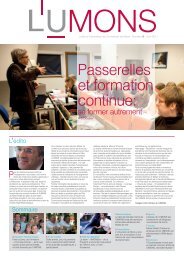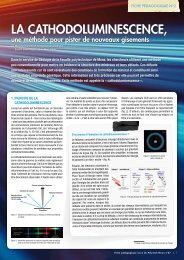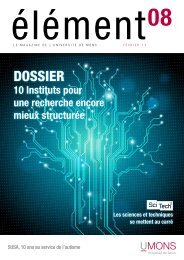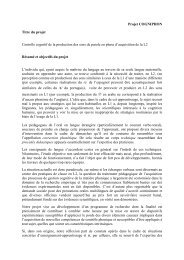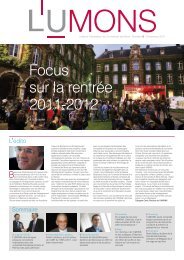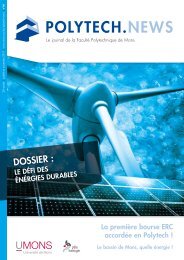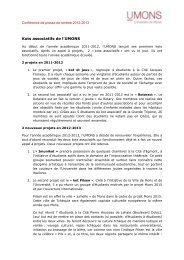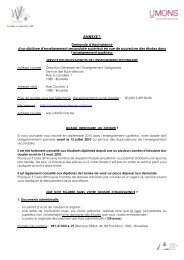Second branchial cyst in the parapharyngealspace - Université de ...
Second branchial cyst in the parapharyngealspace - Université de ...
Second branchial cyst in the parapharyngealspace - Université de ...
You also want an ePaper? Increase the reach of your titles
YUMPU automatically turns print PDFs into web optimized ePapers that Google loves.
ANL-1153; No of Pages 4<br />
4<br />
transcervical–transparotid approach (mandibular luxation<br />
vs. mandibular sw<strong>in</strong>g, 4/36 cases) transoral approach with<br />
total excision (5/36 cases) and marsupialisation (2/36 cases)<br />
[5,9–15]. Simple <strong>in</strong>cision, puncture-aspiration of <strong>the</strong> <strong>cyst</strong>, or<br />
<strong>in</strong>jection of sclerosant substances presents a high risk of<br />
recurrence. Complete resection us<strong>in</strong>g <strong>the</strong> transcervical<br />
approach seems to be <strong>the</strong> technique of choice but several<br />
neurovascular complications (palsies of cranial nerves IX, X<br />
and XII) are <strong>de</strong>scribed [9,12]. In our experience, <strong>the</strong> key<br />
po<strong>in</strong>t of <strong>the</strong> transoral approach was to aspirate <strong>the</strong> <strong>cyst</strong> –<br />
<strong>de</strong>creas<strong>in</strong>g very significantly <strong>the</strong> <strong>cyst</strong> size – before<br />
perform<strong>in</strong>g <strong>the</strong> lateral dissection with a long-electro<strong>the</strong>rmal<br />
bipolar vessel sealer. For a very large <strong>cyst</strong>, even us<strong>in</strong>g a<br />
transcervical approach, <strong>the</strong> reduction of <strong>the</strong> <strong>cyst</strong> size thanks<br />
to an aspiration could be an <strong>in</strong>terest<strong>in</strong>g solution. Moreover,<br />
we realized usually such aspiration for huge cervical <strong>cyst</strong><br />
(type 2) which allowed to <strong>de</strong>crease <strong>the</strong> <strong>in</strong>cision size.<br />
<strong>Second</strong>, <strong>the</strong> transoral approach provi<strong>de</strong>s <strong>the</strong> best<br />
es<strong>the</strong>tic results. Diaz-Manzano recently <strong>de</strong>scribed a<br />
transoral approach allow<strong>in</strong>g marsupialization with postoperative<br />
obliteration of <strong>the</strong> tract [15]. No visible scar was<br />
created us<strong>in</strong>g this transoral approach; this cosmetic<br />
consi<strong>de</strong>ration could be particularly significant for our<br />
young patients. The transparotid and transmandibular<br />
approaches presented <strong>the</strong> poorest aes<strong>the</strong>tic results. F<strong>in</strong>ally,<br />
<strong>the</strong> transcervical approach could be preferred when <strong>the</strong><br />
tumor has a palpable neck component, which <strong>in</strong> practice<br />
means that <strong>the</strong> <strong>cyst</strong> has to present a lateral cervical<br />
extension (type 3 <strong>cyst</strong>) [3,5].<br />
In short, parapharyngeal <strong>branchial</strong> <strong>cyst</strong>s are rare and<br />
often paucisymptomatic. The transoral approach can<br />
provi<strong>de</strong> good exposure allow<strong>in</strong>g complete resection<br />
without significant post-operative complications or cervical<br />
scarr<strong>in</strong>g.<br />
S. Saussez et al. / Auris Nasus Larynx xxx (2008) xxx–xxx<br />
References<br />
[1] Bailey H. The cl<strong>in</strong>ical aspects of <strong>branchial</strong> <strong>cyst</strong>s. Br J Surg<br />
1933;10:173–82.<br />
[2] Proctor B. Lateral vestigial <strong>cyst</strong>s and fistulas of <strong>the</strong> neck. Laryngoscope<br />
1955;65:355–401.<br />
[3] Maran AGD, Mackenzie J, Murray JAM. The parapharyngeal space. J<br />
Laryngol Otol 1984;98:371–80.<br />
[4] Güneri A, Günbay MU, Güneri EA, Ceryan K, Sütay S. Management<br />
of parapharyngeal space <strong>cyst</strong>s. J Laryngol Otol 1994;108:795–7.<br />
[5] Sh<strong>in</strong> HJ, Lee HK, Kim SY, Park HW, Khang SK, Choi CG, et al.<br />
Parapharyngeal second <strong>branchial</strong> <strong>cyst</strong> manifest<strong>in</strong>g as cranial nerve<br />
palsies: MR f<strong>in</strong>d<strong>in</strong>gs. Am J Neuroradiol 2001;22:510–2.<br />
[6] Carlson BM. Human embryology and <strong>de</strong>velopmental biology, 3rd ed.,<br />
Mosby: St. Louis; 2004.<br />
[7] Stevenson RE, Hall J, editors. Human malformations and related<br />
anomalies. 2nd ed., Oxford: Oxford University Press; 2006.<br />
[8] Wild G, Mischke D, Lobeck H, Kastenbauer E. The lateral <strong>cyst</strong> of <strong>the</strong><br />
neck: congenital or acquired. Acta Otolaryngol (Stockh)<br />
1987;103:546–50.<br />
[9] Ostfeld EJ, Wiesel JM, Rab<strong>in</strong>son S, Auslan<strong>de</strong>r L. Parapharyngeal<br />
(retrostyloid)-third <strong>branchial</strong> cleft <strong>cyst</strong>. J Laryngol Otol<br />
1991;105:790–2.<br />
[10] Shidara K, Uruma T, Yasuoka Y, Kamei T. Two cases of nasopharyngeal<br />
<strong>branchial</strong> <strong>cyst</strong>. J Laryngol Otol 1993;107:453–5.<br />
[11] Thaler ER, Tom LW, Handler SD. <strong>Second</strong> <strong>branchial</strong> cleft anomalies<br />
present<strong>in</strong>g as pharyngeal masses. Otolaryngol Head Neck Surg<br />
1993;109:941–4.<br />
[12] Papay FA, Kalucis C, Eliachar I, Tucker HM. Nasopharyngeal presentation<br />
of second <strong>branchial</strong> cleft <strong>cyst</strong>. Otolaryngol Head Neck Surg<br />
1994;110:232–4.<br />
[13] Durrant TJ, Sevick RJ, Lauryssen C, MacRae ME. Parapharyngeal<br />
<strong>branchial</strong> cleft <strong>cyst</strong> present<strong>in</strong>g with cranial nerve palsies. Can Assoc<br />
Radiol J 1994;45:134–6.<br />
[14] Chabot M, Fra<strong>de</strong>t G, Thériault R, Morrissette YP. The excision of<br />
<strong>branchial</strong> parapharyngeal <strong>cyst</strong>s by transbuccal or -cervical approach. J<br />
Otolaryngol 1995;25:108–12.<br />
[15] Diaz-Manzano JA, Sànchez-Mart<strong>in</strong>ez N, Iniesta-Alcàzar J, Med<strong>in</strong>a-<br />
Banegas. A conservative surgical treatment of parapharyngeal <strong>branchial</strong><br />
<strong>cyst</strong>. Auris Nasus Larynx 2008;35:161–4.<br />
Please cite this article <strong>in</strong> press as: Saussez S, et al. <strong>Second</strong> <strong>branchial</strong> <strong>cyst</strong> <strong>in</strong> <strong>the</strong> <strong>parapharyngealspace</strong>: A case report. Auris Nasus Larynx<br />
(2008), doi:10.1016/j.anl.2008.06.005


